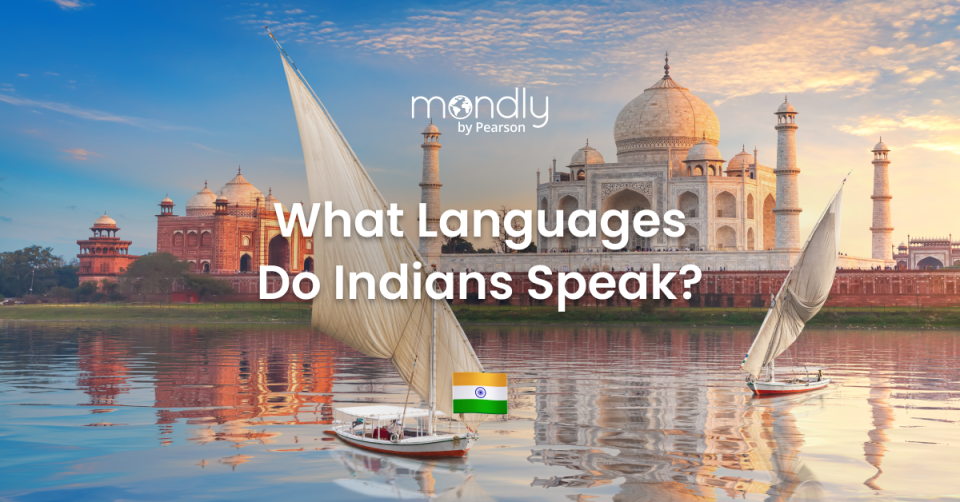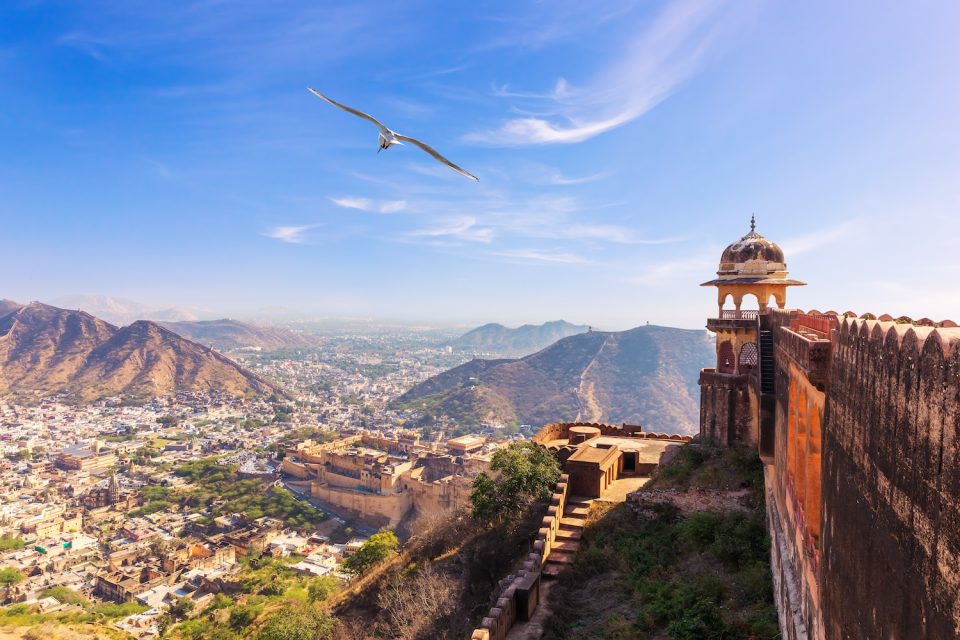The Spelling Challenge: Overcoming Hard Words to Spell and Pronounce
Pronouncing ‘colonel’ right on the first try? Mission impossible. 🥵
Explore the 4th most linguistically diverse country in the world. 🇮🇳

If you’ve ever wondered about the languages spoken in India, buckle up! You’re about to discover why this country is often called a “language museum.” Traveling from the snow-capped Himalayas to the tropical shores of Kerala, you’ll find that India’s linguistic diversity is enough to make a polyglot’s head spin.
India recognizes 22 languages in its Constitution under the Eighth Schedule. These languages have official status and show up everywhere from government offices to school textbooks:
But wait, that’s just scratching the surface!
So how many languages are spoken in India? According to the People’s Linguistic Survey of India, the country is home to 780 languages, with about 450 still actively spoken today.
The 2011 census (yeah, I know, it’s getting a bit dated) recorded 121 major languages (spoken by more than 10,000 people) and hundreds of smaller languages and dialects. This incredible diversity makes India the fourth most linguistically diverse country in the world, after Papua New Guinea, Indonesia, and Nigeria.
What blows my mind is that language in India often changes every few kilometers. You could literally have breakfast in one language zone and lunch in another without traveling very far. Imagine if New York, New Jersey, and Connecticut all spoke completely different languages with different scripts!
Some cool curiosities about language diversity in India:
When asking “what language does India speak,” it’s important to understand that India doesn’t have a single national language. Instead, the Indian Constitution lists Hindi (in Devanagari script) and English both as the two official languages for government business at the federal level.
Each state and union territory can also choose its own official language. For example:
This system allows regional languages to thrive while providing common languages for national communication. In practice, this creates a fascinating linguistic landscape where road signs, government documents, and educational materials are often multilingual. Ever seen a seven-language road sign? In India, that’s just a normal day.
Indian languages belong to several distinct language families, with the two largest being:
Part of the larger Indo-European family (yep, distantly related to English, Spanish, and Russian), these languages are spoken by about 78% of Indians:
These languages are primarily spoken in southern India and were doing their thing long before the Indo-Aryan languages showed up:
Other language families in India include Austroasiatic (like Khasi and Mundari), Tibeto-Burman (like Bodo and Manipuri), and even some language isolates that don’t fit into any family. Linguistic orphans, if you will.

Languages in India aren’t just communication tools—they’re carriers of cultural heritage and identity. Each language represents a unique worldview, literary tradition, and cultural practices.
For many Indians, their mother tongue is deeply connected to their sense of self. Some people who’d sooner give up a kidney than stop speaking their native language. Regional languages often serve as repositories of folk traditions, music, poetry, and philosophical thought that might not translate perfectly into other languages.
This connection between language and identity has sometimes led to political movements. For example, the states of India were reorganized along linguistic lines in the 1950s and 60s after significant popular movements demanded states based on language communities. People literally took to the streets for the right to have their language recognized!
Language also influences:
Despite India’s incredible linguistic diversity, many of its languages are now at risk of disappearing. According to UNESCO, about 197 Indian languages are endangered or vulnerable.
Some of the most endangered languages include:
Several factors contribute to language endangerment:
But it’s not all doom and gloom! Preservation efforts are underway. The government has established the Central Institute of Indian Languages, and various non-governmental organizations are documenting endangered languages, creating dictionaries, and developing teaching materials.
Digital technology is also helping preservation efforts through language apps, online dictionaries, and social media communities dedicated to lesser-known languages. Who knew TikTok would become a tool for language preservation?
While it’s impossible to list all 780+ languages spoken across India (we’d be here till next week), here’s a table showing some of the significant languages beyond the 22 official ones:
| Language | Speakers | Primary Region | Language Family |
|---|---|---|---|
| Bhojpuri | 50M | Bihar, UP | Indo-Aryan |
| Rajasthani | 20M | Rajasthan | Indo-Aryan |
| Chhattisgarhi | 16M | Chhattisgarh | Indo-Aryan |
| Tulu | 2M | Karnataka, Kerala | Dravidian |
| Khasi | 1.1M | Meghalaya | Austroasiatic |
| Garo | 1M | Meghalaya | Tibeto-Burman |
| Mizo | 830K | Mizoram | Tibeto-Burman |
| Gondi | 2.7M | Central India | Dravidian |
| Kutchi | 885K | Gujarat | Indo-Aryan |
| Kodava | 200K | Karnataka | Dravidian |
Yeah, many are on life support. While major languages like Hindi, Bengali, and Tamil continue to thrive, numerous smaller languages are hanging by a thread. UNESCO has identified nearly 200 Indian languages as endangered. Languages with fewer speakers, limited documentation, and no official status are particularly vulnerable. It's like watching rare species disappear before our eyes. But there's hope! Preservation efforts by government institutions, academics, and community organizations are working to document and revitalize these linguistic treasures. Some communities have started language nests where elders teach the young ones. Better late than never, right?
Urdu is basically Hindi's twin separated at birth. Despite being written in different scripts (Urdu in Persian-Arabic script and Hindi in Devanagari), they share a common grammar and much of their basic vocabulary. In everyday spoken form, they're so similar that linguists often refer to them collectively as "Hindustani." If you speak Hindi, you can watch Urdu poetry sessions and understand most of it. Other close relatives include Punjabi, Gujarati, and Rajasthani, which belong to the same Indo-Aryan language family. Think of them as cousins who can understand each other after a few drinks.
Indian languages have passport stamps from several countries. Bengali is the national language of Bangladesh. Nepali is spoken in Nepal and Bhutan. Tamil has official status in Singapore and Sri Lanka. Hindi is widely understood in Nepal, Fiji, Mauritius, Trinidad and Tobago, Guyana, and Suriname due to the Indian diaspora. You can literally walk into parts of Fiji and hear people speaking a version of Hindi that's been evolving there for generations! Additionally, Urdu is the national language of Pakistan, though it's considered the same language as Hindi in its spoken form. Colonial history and migration patterns have scattered Indian languages far and wide.
Well, yes and no. It's complicated. Languages within the same family share similarities, for example, Hindi, Bengali, and Marathi (all Indo-Aryan) have related vocabulary and grammatical structures. If you know one, you can often pick up patterns in the others. However, languages from different families can be completely dissimilar. Tamil (Dravidian) and Hindi (Indo-Aryan) have fundamentally different origins, grammar, and vocabulary. They're about as similar as Chinese and English. That said, centuries of contact have led to borrowing between language families, creating some shared features even among otherwise unrelated languages. It's like neighbors who've lived next to each other for centuries and started borrowing each other's recipes and furniture.
India’s linguistic diversity isn’t just a fascinating cultural phenomenon—it’s a living testament to the country’s philosophy of “unity in diversity.” As you explore the question “what do Indians speak,” remember that each language represents a unique way of seeing the world, with its own literature, art, and cultural traditions that have evolved over centuries.
And if you ever visit India, don’t worry too much about the language barrier. Just learn to say “the food is delicious” in a few local languages, and you’ll make friends everywhere you go!
Curious about Indian languages? With Mondly, you can start learning Bengali, Hindi, and Urdu through quick, practical lessons that bring each language to life.
Try Mondly for free on your computer or download the app to start learning anytime, anywhere.

Pronouncing ‘colonel’ right on the first try? Mission impossible. 🥵

How does Santa know so many languages? 🎅 Let's discover his secret.

If you’re thinking ‘Belgian’, stop right there.